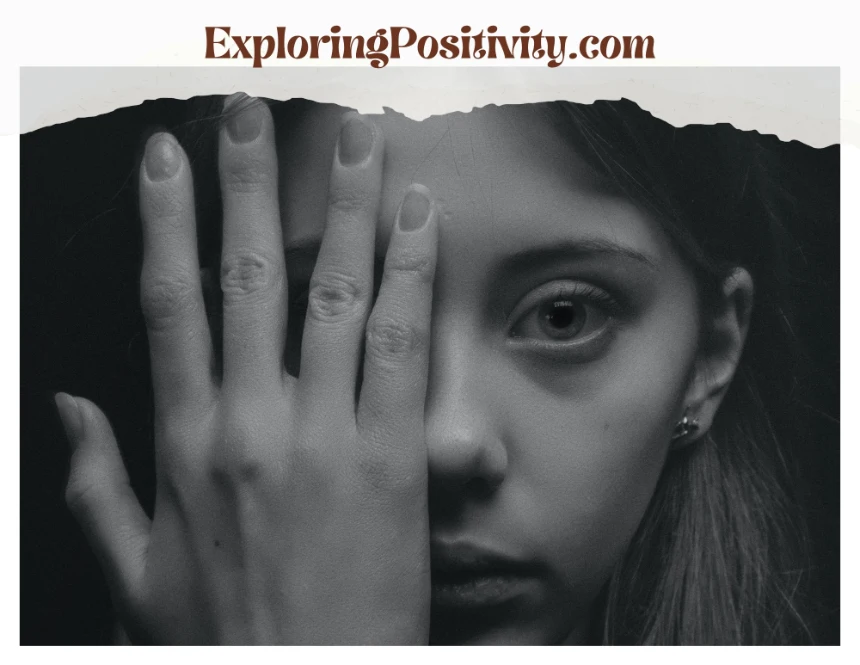Fearful avoidant deactivating refers to a pattern of behaviours seen in some individuals who have a fearful avoidant attachment style.
This attachment style develops in childhood and leads to difficulty with emotional intimacy in adult relationships.
The “deactivating” aspect refers to behaviors that distance a person from their partner and turn off their attachment system.
I understand you have concerns about fearful avoidant deactivating behaviors in your relationship. It’s clear you care deeply for your partner and want to find solutions.
While avoidance can be challenging, growth is possible. Try to remain patient and let your partner know you are there for them, even when they pull away.
With consistent support, empathy, and professional help, fearful avoidants can become more secure and comfortable with intimacy over time. Keep communicating your needs while respecting theirs.
This article provides a roadmap for improving dynamics. Have hope – with mutual effort, more closeness can develop.
You may learn tools to reconnect after distance and make the relationship more fulfilling for you both. Stay open and committed – the solutions are out there. You deserve a caring partnership.
What is Fearful Avoidant Attachment?
Fearful avoidant is one of four key adult attachment styles, the others being secure, anxious-preoccupied, and dismissive-avoidant.
Individuals with a fearful, avoidant attachment style generally want close relationships but also feel uncomfortable relying on others and opening up to partners.
They desire intimacy yet struggle to trust and open up to romantic partners.
As children, these individuals likely experienced inconsistent caregiving. Their caregivers were, at times, intrusive and, at other times, emotionally unavailable. This led them to see relationships as unpredictable.

How Fearful Avoidant Attachment Develops
Fearful avoidant attachment usually develops in childhood as a result of inconsistent caregiving. For example:
Parents Were Sometimes Caring, Sometimes Dismissive
Children may have received affection sometimes, while other times, their feelings were dismissed or ignored by caregivers. They learned relationships were unpredictable.
Needs Were Sometimes Met, Sometimes Not
Having their physical and emotional needs met inconsistently taught them close relationships were unreliable.
Received Mixed Messages About Intimacy
Caregivers may have sent mixed messages about emotional intimacy, leaving children unsure about appropriate levels of closeness.
Lack of Proper Attachment Figure
Having no primary caregiver to comfortably explore the world with impeded secure attachment formation.
Experience of Trauma
Experiencing trauma at a young age through abuse, neglect, or loss could also contribute to fearful avoidant attachment.
Main Features of Fearful Avoidant Attachment
There are several key characteristics of a fearful, avoidant attachment style:
Desire for Intimacy
Fearful avoidants crave emotional intimacy like secure individuals. They want to feel close to a partner.
Discomfort with Intimacy
Unlike secures, fearful avoidants also feel very uncomfortable opening up to partners and relying on them. Vulnerability scares them.
Seek Isolation
When stressed, fearful avoidants tend to isolate themselves, withdraw from partners, and compulsively self-soothe.
Relationship Anxiety
They feel a lot of anxiety about relationships in general and whether partners genuinely care.
Negative View of Self
Fearful avoidants often have a negative self-image. They may feel unworthy of love.
Negative View of Others
They also tend to have a negative view of others, expecting partners to be unreliable and untrustworthy.
Fearful Avoidant Deactivating Behaviors
The “deactivating” strategies refer to how fearful avoidants distance themselves from partners and shut down emotionally to manage relationship anxiety. Key deactivating behaviors include:
Withdrawal
Fearful avoidants are prone to withdrawing both physically and emotionally from partners when under stress. They retreat into isolation.
Compulsive Self-Soothe
When anxious, they try to compulsively self-soothe through activities like overeating, overworking, substance abuse, etc.
Avoid Vulnerability
Expressing Vulnerability and opening up feels very unsafe for them, so they avoid it. Self-disclosure is limited.
Suppress Emotions
They try to suppress their feelings rather than express them, believing emotions are dangerous in relationships.
Criticize Partners
Criticizing partners allows them to defend against intimacy by pushing the other person away.
Create Conflict
Starting arguments or bringing up unrelated issues creates distance from partners.
Emotional Unavailability
They have difficulty being emotionally engaged, present, and responsive to partners.
Ignore Partner’s Bids
Ignoring a partner’s attempts to get attention or emotional needs met helps them avoid intimacy.
Keep Discussions Superficial
Conversations stay superficial to avoid revealing thoughts and feelings that create closeness.
Prioritize Independence
They emphasize self-reliance and Independence rather than interdependence in relationships.
Make Excuses to Avoid Spending Time Together
Finding excuses not to spend time together or canceling plans prevents intimacy from developing.
Fantasize About Other Partners
Imagining relationships with others can help deactivate attachment to the current partner.
Why Fearful Avoidants Deactivate
There are several key reasons fearful avoidant individuals are prone to deactivating strategies:
Lack of Trust
Their lack of trust in others makes them reluctant to rely on partners. So they distance themselves.
Fear of Rejection
Their deep fears of abandonment and rejection lead them to pull away before their partners can reject them.
Discomfort with Vulnerability
Opening up feels very dangerous, so they avoid Vulnerability that could facilitate intimacy.
Need to Feel in Control
By avoiding dependence on partners, they maintain a sense of control that feels safer.
Relationship Anxiety
Anxiety avoidance allows them to keep an emotional distance from their partners.
Early Relationship Experiences
Early inconsistent caregiving teaches them relationships are unsafe, driving deactivating behaviors.
Negative Views of Self and Others
Their negative self-image and beliefs about others fuel relationship anxiety and deactivation.
Protect Against Repeated Harm
Deactivating helps them avoid repeating the painful abandonment experienced earlier in life.
Difficulty With Emotion Regulation
Their struggles regulating emotions lead them to avoid intimacy that brings up intense feelings.
Defense Mechanism
Deactivating serves as a defense mechanism to manage painful emotions tied to intimacy.

Signs of Deactivating in Fearful Avoidants
How can you identify deactivation in a partner or oneself? Here are some key signs:
Withdrawing Emotionally
Noticeable shifts where they become emotionally distant, shut down, and unavailable.
Avoiding Meaningful Conversations
Dodging deeper conversations and responding minimally or vaguely.
Canceling Plans
Frequently canceling or backing out of plans to spend time together.
Picking Fights
Picking unrelated fights or being overly critical of the partner creates distance.
Spending Time Apart
Wanting to spend more and more time alone or apart from the partner.
Relying on Addictive Behaviors
Increased substance use, gambling, gaming, overeating, overworking, etc.
Making Excuses
Excessive excuses why they can’t talk, hang out, or engage emotionally.
Ignoring Partner’s Needs
Not responding to partner’s bids for attention, affection, or support.
Fantasizing About Others
Mentioning interest in others or fantasizing about alternate partners.
Acting Defensive
Getting excessively defensive when the partner asks for intimacy, disclosure, etc.
Impact of Deactivating on Partners
A partner’s deactivating behaviors can be very painful for individuals dating a fearful avoidant. Potential effects include:
Feeling Rejected
The withdrawal feels very rejecting, causing the partner to feel hurt and unvalued.
Increased Anxiety
The distancing spikes anxiety in the partner about the relationship’s future.
Abandonment Fears
It triggers strong abandonment fears in the partner.
Emotional Neglect
The partner ends up feeling lonely, unsupported, and emotionally neglected.
Insecure Attachment
A partner with an insecure attachment style may have their insecurities exacerbated.
Lack of Stability
The highs and lows make the relationship feel unstable and unpredictable.
Confusion
The partner feels confused trying to understand the fearful avoidant’s distancing.
Helplessness
Partners feel helpless trying to get their intimacy needs met by the avoidant partner.
Mistrust
Repeated distancing breeds mistrust between partners over time.
Resentment
Partners can start to feel acute resentment at their emotional needs being ignored.
Compromised Self-Esteem
The partner may start to feel unworthy of love and defective.
Emotional Exhaustion
The pursuit-distance dynamic leads to emotional exhaustion in the partner.
Improving Fearful Avoidant Deactivating
While deactivating behaviors are very ingrained, there are ways fearful avoidant individuals can work to improve attachment patterns:
Seek Insight Through Education
Learning about attachment theory provides insight into why they distance partners.
Notice Depersonalization
Key awareness that they imaginarily cut off from partners when stressed.
Identify Triggers
Figuring out situations that tend to spike anxiety and prompt deactivating.
Challenge Automatic Thoughts
Questioning thoughts like “he’ll leave me if I open up.”
Practice Self-Disclosure
Pushing past discomfort to share vulnerable emotions and thoughts.
Engage in Difficult Dialogues
Having needed conversations even if uncomfortable.
Stay Present and Engaged
Making efforts to emotionally reconnect after distancing.
Access Emotions
Allowing themselves to identify and feel difficult emotions.
Seek Professional Help
Working with a therapist specializing in attachment wounds and intimacy issues.
Emotion Regulation Skills
Learning healthy strategies to cope with distressing feelings that arise with intimacy.
Take Emotional Risks
Taking chances allows greater dependence and reciprocity in relationships.
Share Relationship Needs
Expressing intimacy needs clearly and directly to partners.
Trust Partner Can Handle Emotions
Believing partners can manage the feelings that come with emotional closeness.
Amend Negative Views of Self and Others
Through therapy, they develop more hopeful views of themselves, their partners, and their relationships.

Improving a Relationship With a Fearful Avoidant
For partners of fearful avoidants, these strategies may help improve the relationship:
Learn About Attachment Styles
Educating oneself about attachment theory to better understand a partner’s avoidance.
Give Space But Don’t Abandon
Providing a partner space when they distance but signaling you’re still there for them.
Get support
Having friends and activities outside the relationship to meet emotional needs the avoidant partner doesn’t meet.
Encourage communication
Slowly encouraging a fearful avoidant partner to open up at their own pace.
Set Boundaries Around Unacceptable Behavior
Not tolerating cruel behavior but being compassionate about underlying hurts.
Focus on the Positive
Building positive experiences to develop more security in the relationship.
Don’t Take It Personally
Their attachment anxiety and not yours drive understanding distancing.
Reassure Your Commitment
Consistently reassuring your love, care, and commitment to the relationship.
Build Trust Over Time
Establishing trust gradually through reliability, consistency, and emotional availability.
Practice empathetic Listening
Allowing them to share feelings without judgment when deactivating subsides.
Have Patience
Recognizing becoming securely attached takes consistent positive experiences over time.
Seek Couples Counseling
Working with a therapist experienced with attachment issues.
Attachment Styles in Relationships
Four primary attachment styles impact how people relate to romantic relationships. These include:
Secure Attachment Style
Securely attached people feel comfortable with intimacy and are trusting and open with partners. They can healthily depend on others and don’t worry about abandonment. Secure attachment usually develops when caregivers are consistently responsive to a child’s needs.
Anxious-Preoccupied Attachment Style
Those with an anxious-preoccupied attachment style desperately crave intimacy but constantly fear rejection and abandonment. They may come across as needy or clingy as they seek constant reassurance. This style often stems from inconsistent caregiving.
Dismissive-Avoidant Attachment Style
Dismissive-avoidants are uncomfortable with intimacy and try to minimize dependence on partners. They prioritize Independence and suppress vulnerable emotions. Emotionally unavailable parenting contributes to dismissive-avoidant attachment.
Fearful Avoidant Attachment Style
As covered in this article, fearful avoidants fluctuate between anxious and avoidant behavior in relationships. Their childhood likely involved mixed messages about caregiver availability.
Causes of Insecure Attachment
Various factors can interfere with forming a secure attachment pattern in childhood:
- Abuse, neglect, or trauma
- Loss of a caregiver
- Physical or mental illness of the caregiver
- Adoption
- Frequent changes in caregivers
- Emotionally unavailable parenting
- Inconsistent parenting
- Authoritarian parenting style
- Lack of physical contact and affection
Children need consistently warm, sensitive, and responsive care giving to develop secure attachment. Insecure attachment stems from deficiencies in care.

Attachment Theory History
Attachment theory originated with British psychologist John Bowlby in the 1950s. He theorized that an infant’s relationship with primary caregivers leads to the development of an attachment style that shapes future relationships.
Mary Ainsworth further developed attachment theory by identifying three initial attachment styles through her “Strange Situation” experiments – secure, anxious-ambivalent (preoccupied), and avoidant (dismissive). A fourth style, disorganized, was later added.
Other key contributors include Mary Main, who linked attachment styles to adult behavior, and Kim Bartholomew, who defined the fearful-avoidant style.
Attachment and the Brain
Attachment theory is grounded in the brain functions involved in early bonding:
Reward Circuits
The brain’s reward circuits drive an infant to bond with caregivers who provide comfort and care.
Right Brain Development
Early care stimulates right brain growth governing emotions and relationships. Poor care impedes it.
Internal Working Models
The brain encodes “internal working models” about self-worth and expectations of others based on childhood attachment experiences.
Self-Soothing vs. Co-Regulation
Securely attached children learn to co-regulate stress with caregivers. Insecurely attached ones are forced to self-soothe.
Understanding neurobiology underscores how critical early caregiving is in shaping emotional health.
Healing Fearful Avoidant Attachment
Though formed in childhood, insecure attachment patterns like fearful avoidance can be healed through:
Building Self-Awareness
Therapy to uncover subconscious beliefs driving avoidance and poor relationship patterns.
Learning New Coping Strategies
Developing healthy emotion regulation skills to tolerate distress without withdrawing.
Taking Emotional Risks
Pushing past fears to be vulnerable and engage in close relationships.
Having Corrective Experiences
With a sensitive, responsive partner providing consistent positive interactions.
Earning New Trust
Slowly building trust in others through small risks that pay off over time.
Expanding Capacity for Intimacy
Moving through repeated cycles of closeness to expand tolerance for emotional intimacy.
While attachment styles tend to persist, with motivation and the right strategies, they can be shifted toward security.
Communicating With a Fearful Avoidant Partner
Partners of fearful avoidants can use certain communication strategies to help build security:
Give Them Space
Don’t chase or crowd them when they need distance. Let them come back in their own time.
Set Boundaries Around Unacceptable Behavior
Don’t tolerate abusive actions. But set boundaries compassionately without ultimatums.
Reassure Your Commitment
Provide consistent verbal and physical reassurance of your care and devotion.
Ask Open-Ended Questions
Ask how they’re feeling and thinking without demanding intimate details.
Be patient
Move slowly and let them disclose at their own pace. Don’t take delays personally.
Practice Active Listening
Skills like paraphrasing and reflecting on feelings demonstrate you hear them.
Express Your Needs and Feelings
Do so without blame or accusations around their avoidance.
Compromise Around Intimacy
Negotiate small steps forward they feel capable of. Don’t expect a drastic change.
Focus on the Present
Discuss how to meet each other’s needs now versus analyzing the past.
Pick Times they are Receptive
Initiate important talks when they are rested and calm rather than already stressed.

Self-Care for Partners of Fearful Avoidants
Partners should make self-care a priority by:
Seeking Individual Therapy
To work through personal attachment wounds exacerbated by the relationship.
Confiding in Trusted Friends and Family
To get needed support without overburdening your partner.
Cultivating Outside Interests and Hobbies
That provides fulfillment apart from the relationship.
Practicing Relaxation Techniques
Like meditation, yoga, and deep breathing to manage your stress.
Fostering Self-Compassion
Being kind to yourself and acknowledging your feelings are valid.
Setting Healthy Boundaries
Around how much you give when your partner distances.
Focusing on Your Strengths
To counteract the self-doubt that can arise.
Making Time for Self-Care
From taking baths to vacations – prioritize caring for yourself.
Avoiding isolationIsolation
Stay connected to others so you don’t become isolated like your partner.
Remembering It’s Not Personal
Their deactivation is driven by fear, not anything wrong with you.
Working With an Attachment-Focused Therapist
Seeking professional support can help both fearful avoidants and their partners. Look for a therapist who:
- Has expertise in attachment theory and attachment-based therapy
- Takes a compassionate, insight-oriented approach
- Helps you identify subconscious beliefs driving behaviors
- Teaches emotion regulation and distress tolerance skills
- Facilitates Vulnerability and intimacy-building between partners
- Focuses on the attachment needs of both partners
- Helps couples engage in open, non-defensive communication
- Assists couples in breaking negative interaction cycles
- Enhances empathy and mutual understanding between partners
- Is familiar with the latest attachment-based interventions
- Provides referrals to adjunct services like group therapy when needed
- Takes a holistic view encompassing individual and relationship health
Attachment-Focused Psychotherapy Methods
Therapists may use methods like:
- Emotionally Focused Therapy for Couples – targets attachment fears and needs
- Internal Family Systems – uncovers wounds driving attachment anxiety
- Sensorimotor Psychotherapy – resolves attachment trauma held in the body
- Psychodynamic approaches – accesses the unconscious attachment patterns
- Cognitive-behavioral techniques – challenges limiting beliefs about relationships
- Dialectical Behavior Therapy – teaches distress tolerance skills
- Mindfulness practices – cultivate emotional awareness and presence
- Parts work – maps and integrates different aspects of the self
- Eye Movement Desensitization and Reprocessing – processes memories driving avoidance
The most effective treatment engages both cognitive and experiential techniques tailored to the individual.
Attachment in Other Relationships
While often discussed in the context of romantic partnerships, attachment theory also provides insight into other relationships:
Parent-Child Attachment
The attachment bond between parent and child lays the foundation for all future relationships. Secure parent-child attachment supports the child in developing a secure attachment style.
Friendships
Attachment styles affect not only romantic bonds but also friendships. Securely attached individuals build more trusting, intimate friendships. Avoidantly attached people tend to have more superficial friendships.
Coworker Relationships
Attachment style impacts dynamics with colleagues. Avoidantly attached individuals may struggle with collaboration, bonding with coworkers, and seeking support at work.
Therapist-Client Relationship
The strength of the client-therapist bond greatly influences therapeutic outcomes. Clients often project attachment patterns onto the therapist.
Leader-Follower Relationships
Leaders with secure attachments inspire confidence and commitment in followers. Avoidant leaders may struggle to form trusting, supportive relationships with team members.
Family Relationships
Early attachment relationships with parents and siblings provide the foundation for interactions with the rest of the family system.
Common Attachment Myths
Despite extensive research, attachment theory is still prone to misconceptions:
Myth: Attachment is Fixed After Childhood
While early experiences are impactful, attachment can shift later through new relationships and insight.
Myth: People Have Just One Attachment Style
We often have different styles with different people. But one style tends to dominate.
Myth: Insecure Attachment Dooms Relationships
Challenging, but not hopeless. Insecure attachments can become more secure.
Myth: Attachment Styles are Binary
Attachment styles occur on a continuum. People may have aspects of multiple styles.
Myth: Attachment Styles Equate to Personality Traits
They shape personality but also result from temperament and other factors.
Myth: Attachment Theory Brings Quick Fixes
Making lasting changes to attachment patterns requires substantial time and work.
Concluding Remarks
In summary, fearful avoidant deactivating refers to distancing behaviors seen in some individuals with fearful avoidant attachment. These deactivating strategies are driven by discomfort with intimacy and serve to manage painful emotions around closeness.
While ingrained, deactivating can be improved through self-insight, communication skills, and trusting relationships where both partners’ needs are respected.
There are no quick fixes for attachment issues, but growth is certainly through self-awareness, emotionally focused therapy, and practicing Vulnerability in caring relationships.
With care, empathy, and gradual trust building, relationships involving a fearful, avoidant individual can slowly become more secure and fulfilling for both partners.
Unlock your potential and boost your positivity – take our free psychological tests at exploringpositivity.com today!



